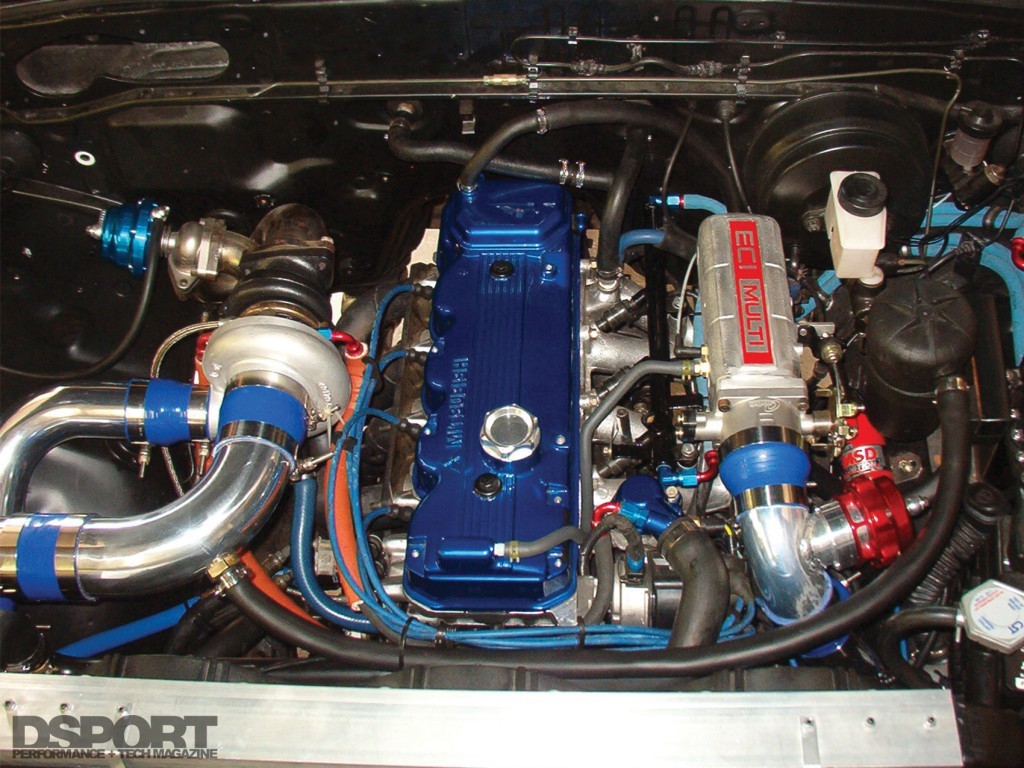The Mitsubishi 4G54 engine, a 2.6L four-cylinder powerplant, holds a unique place in automotive history. As the first Japanese production car engine with both computer-controlled fuel injection and turbocharging, it represented a significant leap forward in technology. However, despite its innovative features, the 4G54 ultimately fell short of expectations and developed a reputation for being challenging to tune and prone to issues. This article delves into the 4G54’s history, specifications, performance capabilities, common problems, and aftermarket potential.
The 4G54: A Pioneer with Flaws
The 4G54 was a large displacement four-cylinder engine for its time, featuring an iron block and either 8 or 12 valves operated by a single overhead camshaft (SOHC). While its turbocharged and fuel-injected design was groundbreaking, its implementation presented several shortcomings. Instead of utilizing a more efficient port fuel injection system, the 4G54 employed a throttle body injection system with two injectors positioned behind the throttle body. This design resulted in uneven fuel distribution among the cylinders, hindering performance and tuning potential. The SOHC configuration limited adjustability of valve overlap, further restricting performance optimization.
 4G54B engine
4G54B engine
Performance and Common Problems
Despite its large displacement, comparable to the renowned Nissan RB26, the 4G54’s performance was underwhelming due to its small factory turbocharger and inherent design limitations. The engine struggled to produce impressive power figures and often fell short of its potential.
A significant issue plaguing the 4G54 was its propensity for head gasket failures. This problem, coupled with the limited aftermarket support, made extracting more power from the engine a considerable challenge. The restrictive intake manifold and throttle body further compounded the performance limitations.
4G54 Engine Specifications
- Manufacturer: Mitsubishi
- Production Years: 1982-1990
- Engine Code: 4G54B
- Displacement: 2,555.5cc (2.6L)
- Bore & Stroke: 91.1mm x 98mm
- Peak Horsepower: 150-197 bhp
- Peak Torque: 160 lb-ft
- Compression Ratio: 9.2:1
- Block Material: Iron
- Head Material: Aluminum
- Valves: 8 or 12
- Applications: 1983-1989 Mitsubishi Starion, 1984-1986 Dodge Conquest, 1987-1989 Chrysler Conquest
The 4G54’s Legacy
The Mitsubishi 4G54 engine, while a technological pioneer, ultimately failed to live up to its initial promise. Its design flaws and limited tuning potential overshadowed its groundbreaking features. Though it found its way into iconic vehicles like the Mitsubishi Starion and Dodge/Chrysler Conquest, the 4G54 is often remembered more for its shortcomings than its achievements. Many owners eventually opted for engine swaps, often replacing the 4G54 with the more robust and tunable 4G63. The 4G54 serves as a reminder that innovation doesn’t always translate into success.
